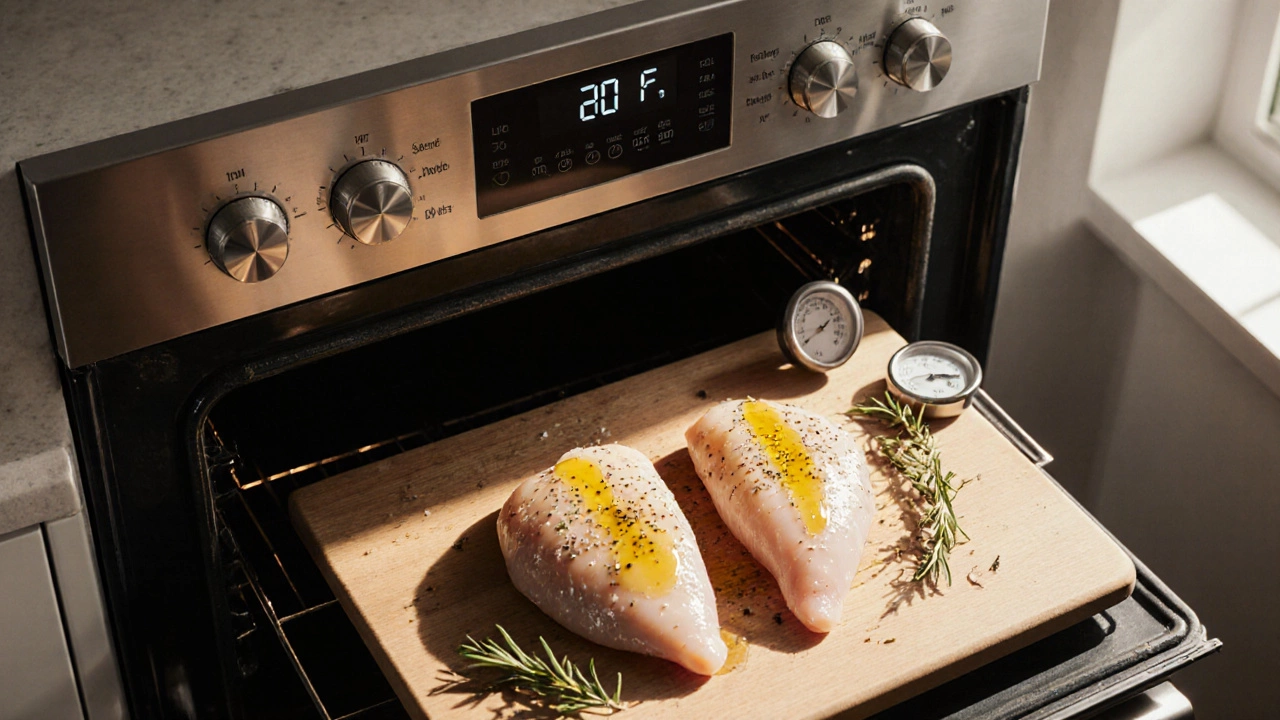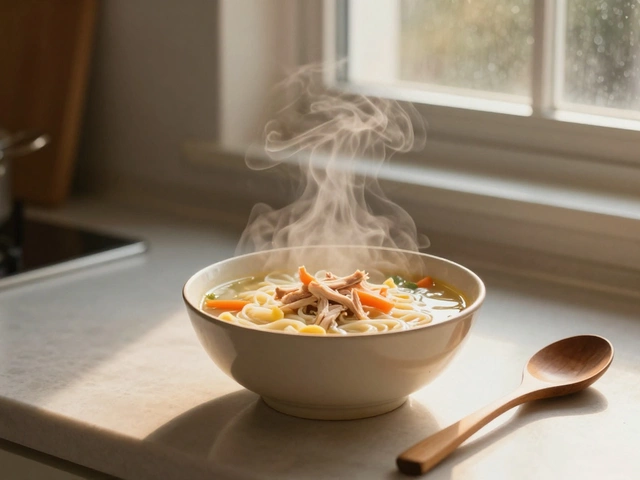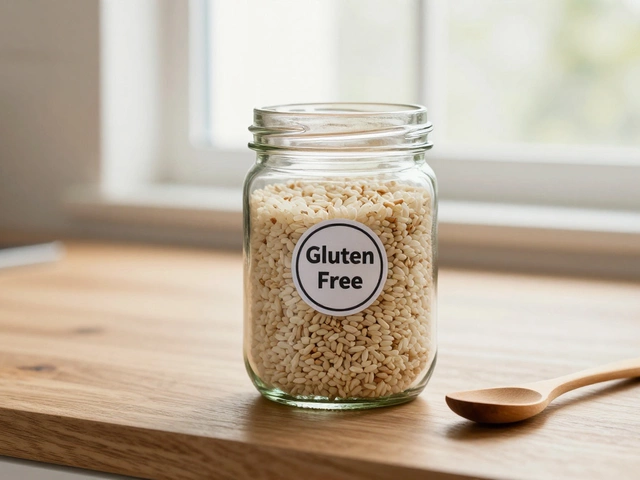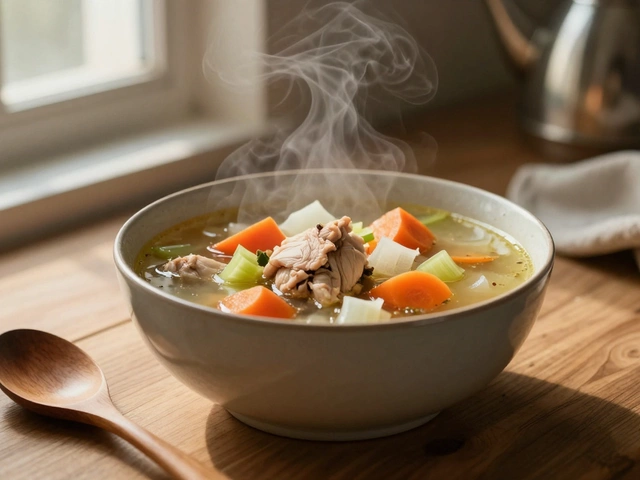Chicken Baking Time Calculator
Calculate Your Perfect Baking Time
Ever wondered exactly how long you should bake chicken 350°F so it turns out juicy, safe, and perfectly cooked? You’re not alone. The line between underdone and dry is thin, and the right timing depends on the cut, the oven, and a few handy tricks. In this guide we’ll break down the minutes you need for every common chicken piece, show you how to check doneness without guessing, and share pro tips that keep the meat tender every single time.
What "bake chicken at 350" really means
Baked Chicken is a preparation method where raw chicken pieces are cooked in a dry heat environment-typically a conventional oven-until the internal temperature reaches a safe level. When the recipe calls for a 350°F setting, it’s referring to a moderate oven temperature that allows the meat to cook evenly without scorching the exterior.
Why oven temperature matters
Oven (350°F) a standard kitchen appliance calibrated to 350 degrees Fahrenheit (about 175°C) provides a balance between heat penetration and moisture retention. Higher temps (like 425°F) can brown the skin fast but risk a dry interior. Lower temps (like 300°F) keep the meat moist but take longer, which can be inconvenient on a busy weeknight.
Core rule of thumb: size + bone = time
The two biggest factors that change cooking time are the thickness of the piece and whether the bone is still in. A boneless breast cooks faster than a bone‑in thigh because there’s less dense material to heat through.
Cooking times for the most common cuts
| Cut | Bone‑in or Boneless | Typical Weight (per piece) | Minutes to Bake | Target Internal Temp |
|---|---|---|---|---|
| Chicken Breast lean, white meat from the chest | Boneless, skinless | 6‑8 oz | 20‑25 | 165°F (74°C) |
| Chicken Breast | Bone‑in, skin‑on | 10‑12 oz | 30‑35 | 165°F (74°C) |
| Chicken Thigh dark meat from the upper leg | Boneless, skinless | 4‑6 oz | 25‑30 | 175°F (80°C) |
| Chicken Thigh | Bone‑in, skin‑on | 8‑10 oz | 35‑40 | 175°F (80°C) |
| Whole Chicken entire bird, typically 3‑5 lb | Unstuffed | 3‑5 lb | 1 hour 15 min - 1 hour 45 min | 165°F (74°C) in thickest thigh |
These numbers are a solid starting point, but every oven behaves a little differently. That’s why checking the internal temperature is the ultimate safety net.
How to use a meat thermometer like a pro
Meat Thermometer a handheld device that measures the temperature inside food removes guesswork. Insert the probe into the thickest part of the meat-avoid bone when measuring breast, but aim for the bone when testing thigh or whole bird. When the reading hits the target temperature listed in the table, the chicken is done.
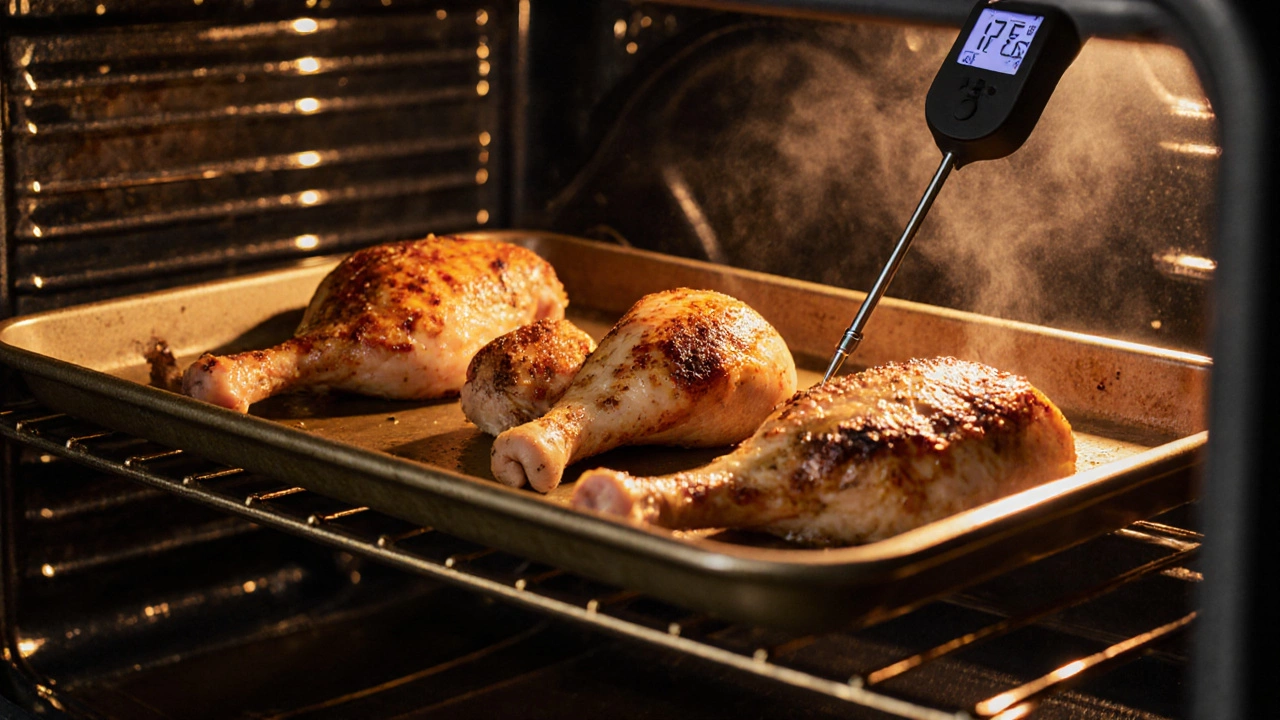
Understanding internal temperature thresholds
Food safety agencies agree that Internal Temperature the temperature reached at the center of the meat of 165°F (74°C) kills harmful bacteria like Salmonella. Dark meat (thighs, drumsticks) benefits from a slightly higher finish-around 175°F (80°C)-because the extra heat melts connective tissue, making it tender.
Convection vs. conventional ovens
If you have a Convection Oven an oven that circulates hot air with a fan, you can shave 5‑10 minutes off the times in the table. The circulating air speeds heat transfer, so the meat cooks faster and more evenly. Just keep an eye on the color; the skin can brown quicker, so you might want to tent it with foil halfway through.
Flavor boosters that don’t add extra time
While the oven does the heavy lifting, a good Marinade a liquid mixture of oil, acid, herbs, and spices can infuse flavor in as little as 30 minutes. For a quick boost, mix olive oil, lemon juice, garlic, and rosemary; coat the chicken and let it sit while the oven preheats.
If you prefer a dry rub, blend paprika, brown sugar, salt, pepper, and a pinch of cayenne. The sugar caramelizes at 350°F, giving a subtle crust without needing a higher temperature.
Common pitfalls and how to avoid them
- Over‑crowding the pan: Stacking pieces forces steam, which can prevent browning. Use a rimmed baking sheet or a shallow roasting pan with enough space for air to circulate.
- Skipping the rest period: Let the chicken rest 5‑10 minutes after it’s out of the oven. The juices redistribute, keeping the meat moist.
- Relying on color alone: Light‑gold skin can still be undercooked inside. Always double‑check with a thermometer.
- Using frozen chicken without thawing: Frozen pieces add 10‑15 minutes to any recipe and can create uneven cooking zones.
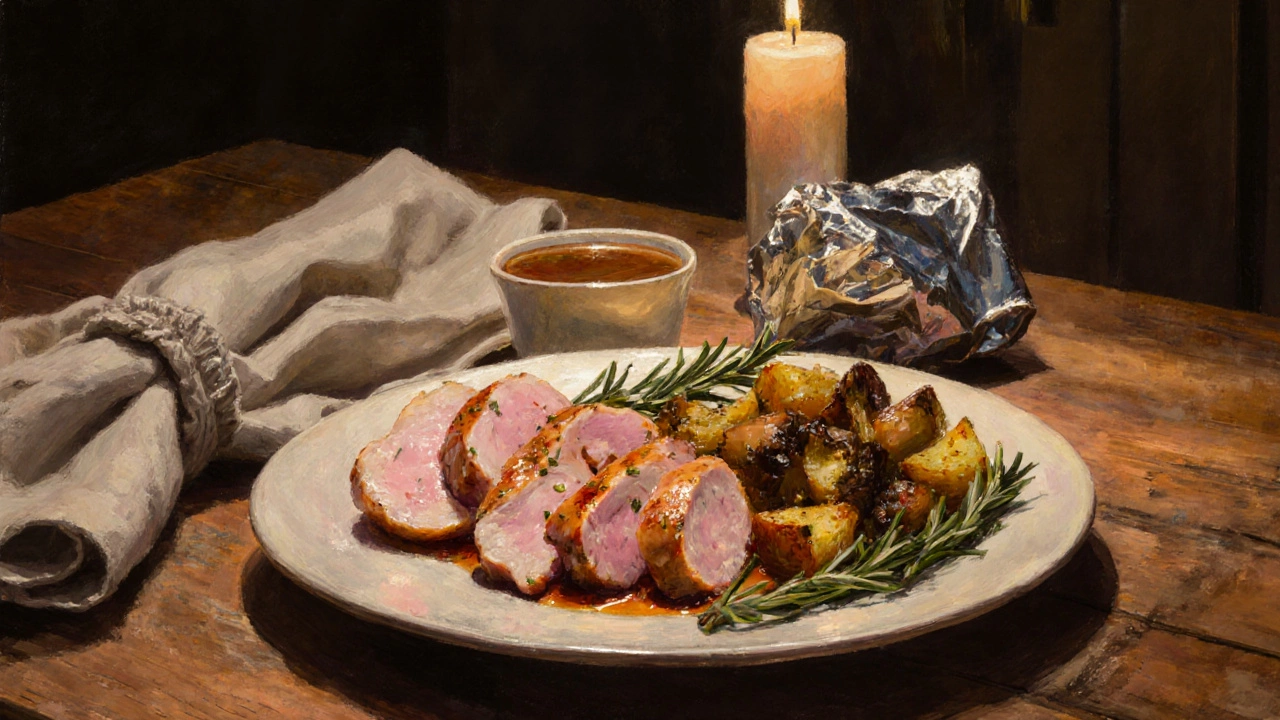
Step‑by‑step: Perfect baked chicken in under 40 minutes
- Preheat your Oven (350°F) to a steady 350°F (175°C). If you have a convection setting, choose it now.
- Pat the chicken dry with paper towels. Moisture on the surface steams the meat instead of crisping the skin.
- Apply a thin layer of olive oil, then sprinkle your chosen Seasoning a blend of herbs, spices, and salt. For example: 1 tsp salt, ½ tsp black pepper, ½ tsp smoked paprika.
- Arrange the pieces on a baking sheet lined with parchment. Leave at least ½ inch between each piece.
- Slide the sheet into the oven. Set a timer for the minimum time in the table (e.g., 20 minutes for boneless breast).
- When the timer buzzes, pull out the sheet and insert a Meat Thermometer into the thickest part. If it reads 165°F (74°C) for breast or 175°F (80°C) for thigh, you’re done.
- If the temperature is low, return the chicken to the oven, checking every 3‑4 minutes.
- Once done, remove the chicken and let it rest on a cutting board. Cover loosely with foil.
- Slice, serve, and enjoy! The rest time will lock in juices, giving you tender, flavorful meat.
Adjustments for altitude and humidity
Living at sea level (like Auckland) gives you a standard boiling point, so the times above work well. At higher altitudes, water boils at lower temperatures, which can dry out the meat faster. Add 5‑10 minutes to the bake time and consider a slightly lower oven temperature (325°F) to keep the interior moist.
Quick reference cheat sheet
- Boneless breast: 20‑25 min, 165°F
- Bone‑in breast: 30‑35 min, 165°F
- Boneless thigh: 25‑30 min, 175°F
- Bone‑in thigh: 35‑40 min, 175°F
- Whole chicken (3‑5 lb): 75‑105 min, 165°F in thigh
- Convection adjustment: -5 to -10 min
Wrapping up
Knowing exactly how many minutes to bake chicken at 350°F takes the guesswork out of dinner. By matching the cut to its recommended time, checking the internal temperature, and using a few simple tricks, you’ll get reliably juicy results every time. Whether you’re feeding a family, prepping meals for the week, or impressing guests, the formulas here are your go‑to cheat sheet. Happy baking!
What is the safest internal temperature for chicken?
The FDA recommends an internal temperature of 165°F (74°C) measured at the thickest part of the meat. Dark meat can be cooked to 175°F (80°C) for extra tenderness.
Can I use a convection oven for the same recipe?
Yes. Reduce the cooking time by 5‑10 minutes or lower the temperature to 325°F. Keep an eye on the skin, as it may brown faster.
Should I cover the chicken with foil while baking?
Covering can prevent over‑browning, especially for longer‑cook cuts like bone‑in thighs or whole chickens. Remove the foil for the last 10 minutes if you want crisp skin.
How long can I keep baked chicken in the fridge?
Store it in an airtight container for up to 3 days. Reheat to 165°F before serving.
Is it okay to freeze baked chicken?
Yes. Freeze within two days of cooking. Thaw in the fridge and reheat to 165°F. It’s best to use within 2‑3 months for quality.
